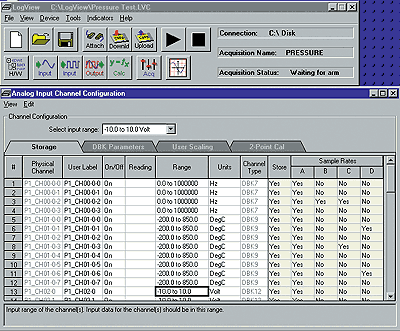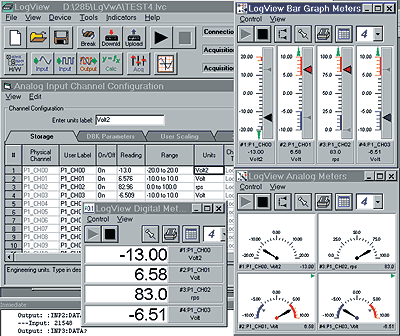查看下面所有型号


产品描述
The OMB-LOGBOOK-300 is no longer available please see the OM-LGR-5320 as a possible alternative or contact our data aquisition department.|
LogView uses a series of
spreadsheets to allow simple setup
and display of all channel parameters.
No auxiliary dialog boxes, configurable
block diagrams, or programming
methodologies are employed.
Simply select the appropriate cell,
choose the desired setting from the
dropdown list, and the parameter is
set. To apply the same setting to
multiple channels, select a block of
cells within a column and use the
spreadsheet’s fill-down feature. After the channels and the acquisition parameters have been configured, download the configuration to a PC-Card in one of your PC’s sockets, or send the configuration directly to the OMB-LOGBOOK-300 via the serial or parallel port. When a PC-Card is used to transport the acquisition configuration to a remote OMB-LOGBOOK-300, inserting the card into one of its sockets signals the OMB-LOGBOOK-300 to read and execute the new acquisition configuration. Once the channel configuration parameters have been downloaded to the OMB-LOGBOOK-300, LogView can display the channel values of a connected OMB-LOGBOOK-300 in real time, both before and during an acquisition. LogView conveniently displays channel values in the channel configuration spreadsheet or in real-time bargraphs, analog meters, and digital indicators. SPREADSHEETS MAKE IT SIMPLE All of the parameters for the analog I/O, digital I/O, frequency and calculated channels can be viewed and adjusted through LogView’s unique spreadsheet interface. The spreadsheets make it possible to see and adjust the parameters of many channels concurrently, unlike typical data parameters of many channels concurrently, unlike typical data logging software that requires channels to be set up one at a time through auxiliary dialog boxes. Channel parameters are independent of one another. Channel parameters include:
All inputs including analog, digital, frequency and calculated channels are collected synchronously so that data from widely dissimilar inputs can be correlated in time. Within the analog spreadsheet, an offset adjustment or 2-point calibration can be performed for each channel. This function compensates for inaccuracies in signal conditioning circuitry and sensors. |  
|